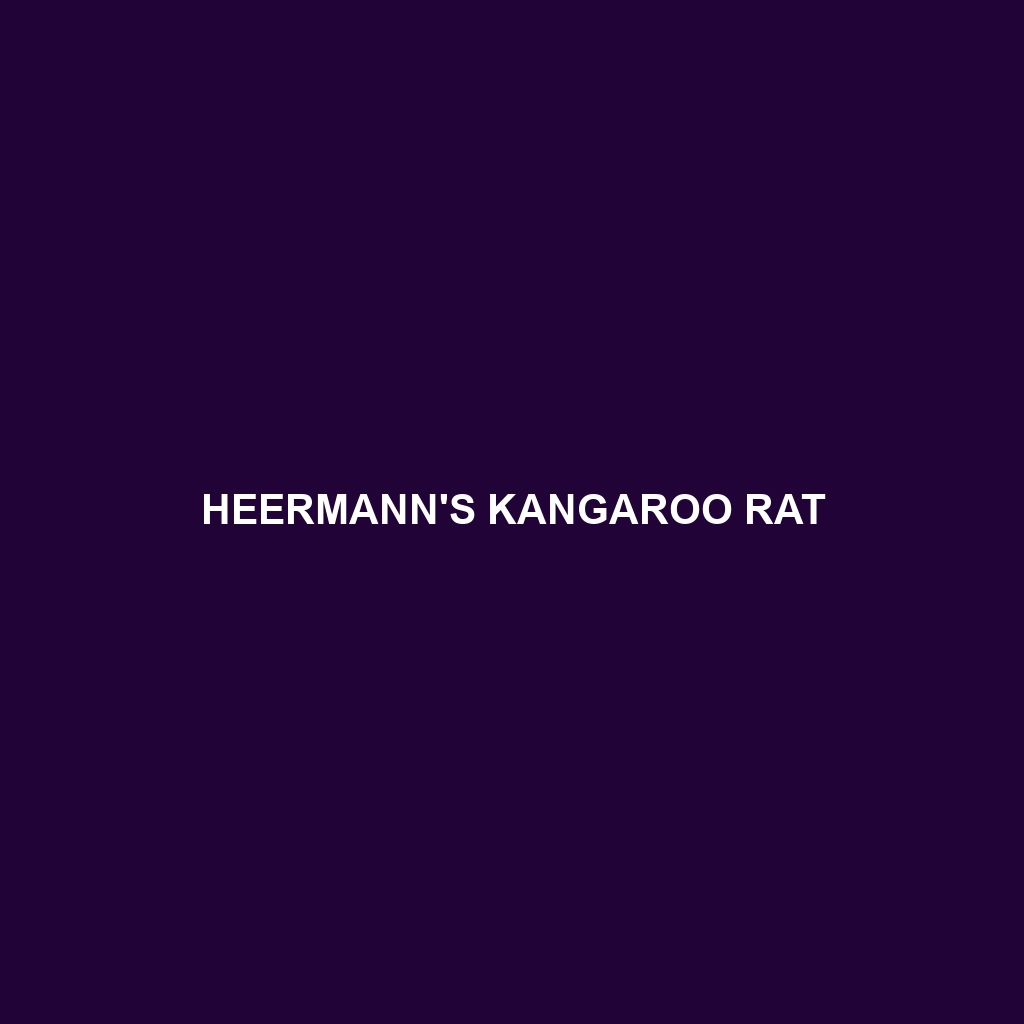Heermann’s Kangaroo Rat (Scientific Name: )
Habitat: Heermann’s Kangaroo Rat is primarily found in the arid and semi-arid regions of the southwestern United States and northwestern Mexico. These rodents typically inhabit sandy and loose soils in desert environments such as the Sonoran Desert and Chihuahuan Desert, where they can easily burrow and create their homes.
Physical Characteristics: Heermann’s Kangaroo Rat is a medium-sized rodent, averaging about 10-12 inches in length, including a long, tufted tail. Its fur is primarily a pale tan or light brown, which helps it blend into its sandy surroundings. The species exhibits distinctively large hind legs, which are adapted for jumping, and large ears that are well-developed for hearing potential predators. Unique features include its long, whiskered snout and a fur-covered tail that helps with balance during impressive leaps.
Behavior: Heermann’s Kangaroo Rat is primarily nocturnal, engaging in most of its activity during the cooler, darker hours of the night. They are known for their remarkable jumping ability and can leap great distances to escape danger. Additionally, these rodents are solitary creatures, preferring to forage and burrow alone in their territories. They exhibit unique behaviors such as sand bathing to maintain their fur and scent-marking their territory.
Diet: As primarily granivorous animals, Heermann’s Kangaroo Rats predominantly feed on seeds, grains, and roots. They have developed a diverse diet that includes seeds from a variety of desert plants, which they often store in their burrows for future consumption. Their feeding habits allow them to thrive in arid conditions where food sources can be scarce.
Reproduction: The breeding season for Heermann’s Kangaroo Rat typically occurs between late spring and early summer. After a gestation period of about 30 days, females give birth to litters containing 2-7 young. The offspring are altricial, being born blind and hairless, and depend on their mother for nourishment. Female kangaroo rats are known to exhibit strong maternal care, nurturing their young until they are ready to venture out on their own.
Conservation Status: Heermann’s Kangaroo Rat is currently classified as a species of “Least Concern” by the International Union for Conservation of Nature (IUCN). While it is not considered endangered, habitat destruction and changes due to agricultural practices pose potential threats to their populations.
Interesting Facts: One fascinating aspect of Heermann’s Kangaroo Rat is its ability to survive without ever drinking water. They obtain all necessary hydration from the seeds they consume, showcasing remarkable adaptations to desert life. Additionally, these rodents possess specialized kidneys that conserve water effectively.
Role in Ecosystem: Heermann’s Kangaroo Rat plays a crucial role in its ecosystem as both a seed disperser and as a prey species for various desert predators, including owls, snakes, and foxes. By aiding in seed germination and dispersal, they contribute to the diversity of desert flora, which in turn supports a variety of other organisms in the arid habitat.
